For a true taste of London life, take a morning stroll around a city market before the crowds arrive
Portobello Road Market
Spanning the 1.5 miles from the shabby-chic charm of Ladbroke Grove to the high-end glamour of Notting Hill Gate, Portobello Road is one of London’s most historic thoroughfares and it is never more charming than on a sunny summer’s day.
Different markets run on every day of the week, ranging from the Sunday vintage fair on Portobello Green and local food stalls in mid-week, through to the full-blown street market on Fridays and Saturdays. It is here that you can find everything from vintage dresses and antique silverware to fresh fruit and delicious baked goods. If you want a bargain, be sure to bring cash and head down early – the antiques dealers are often open by 7am on Saturdays.
All of this can be enjoyed against the backdrop of candy-coloured buildings, fresh coffee in hand, as you saunter down the hill taking in the vibrant atmosphere.
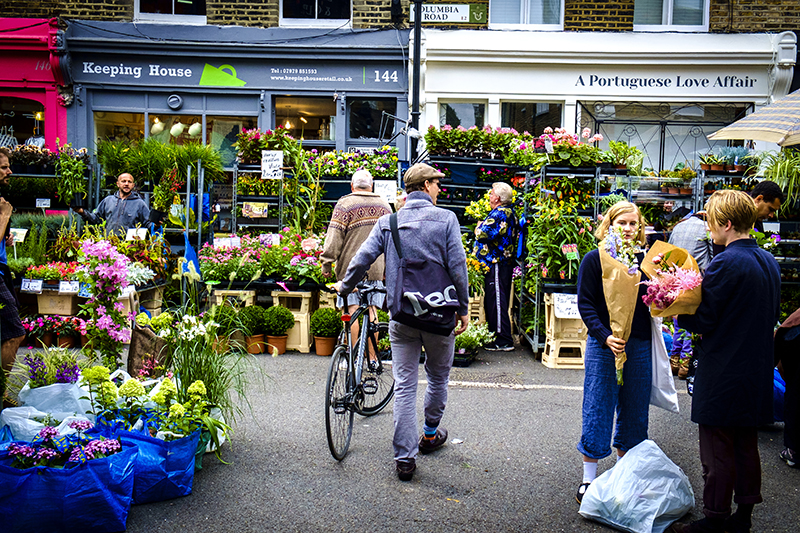
Columbia Road Flower Market
A quaint, shop-lined street in London’s East End, Columbia Road blossoms into life every Sunday from 8am when much of the rest of the area is still sleeping off the previous night’s hangover.
This bustling flower market is something of a London institution, attracting hip locals searching for the ideal pot plant or perennial, as well as passing tourists just keen to soak up the atmosphere. Many of the stallholders have been trading here since the 1970s or before, so they have their Cockney-tinged sales patter down to a fine art. You can avoid the inevitable crowds if you get down early, but there are also bargains to
be had by 2pm when the last bunches of the day are sold off cheaply.
For the perfect Sunday brunch, try homemade pastries and coffee from Campania, followed by something sweet from Great British cake emporium Lily Vanilli, whose wares are also sold in upmarket department store Fortnum and Mason.
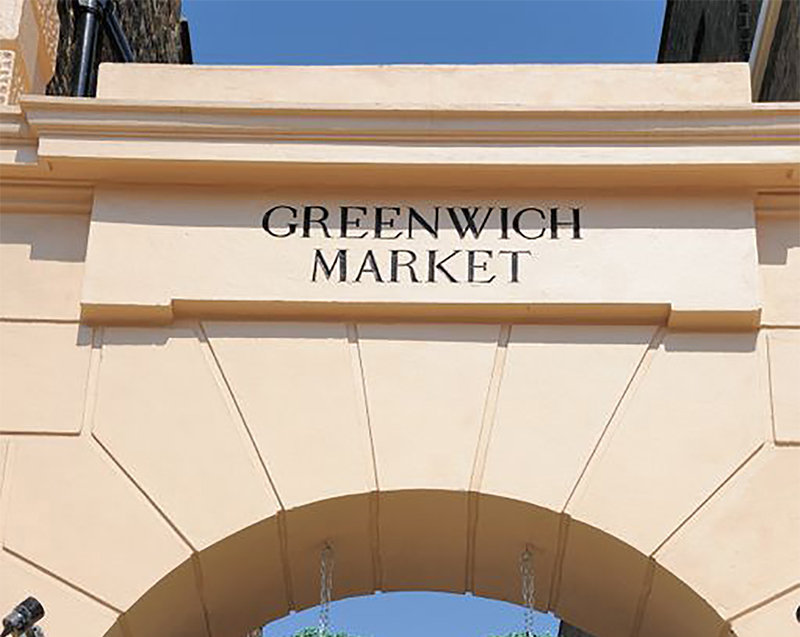
Greenwich Market
While time officially starts at the Royal Observatory in Greenwich Park (international time zones have been measured from this point since 1884), the clocks can often feel as though they have stopped when you grab a bite to eat and browse the stalls of the nearby covered market.
Street food highlights include Red Cow Carvery’s roast beef and Yorkshire puddings, while brunch-time visitors should sample Planet Pancake’s otherworldly crêpes and several stalls selling vegan and free-from cakes, pastries and muffins. The market itself alternates between craft and design stalls (including weekends and bank holidays) and antiques and collectables, while shops lining the square include a gallery of brilliant, affordable artworks
by the Greenwich Printmakers Association.
For the best way to enjoy a day out in Greenwich, pick up the Thames Clipper next to the London Eye in central London for a speedy journey that takes you under Tower Bridge and past Canary Wharf. Once there, be sure to visit the National Maritime Museum, the Royal Observatory and the Cutty Sark, the world’s sole surviving tea clipper.
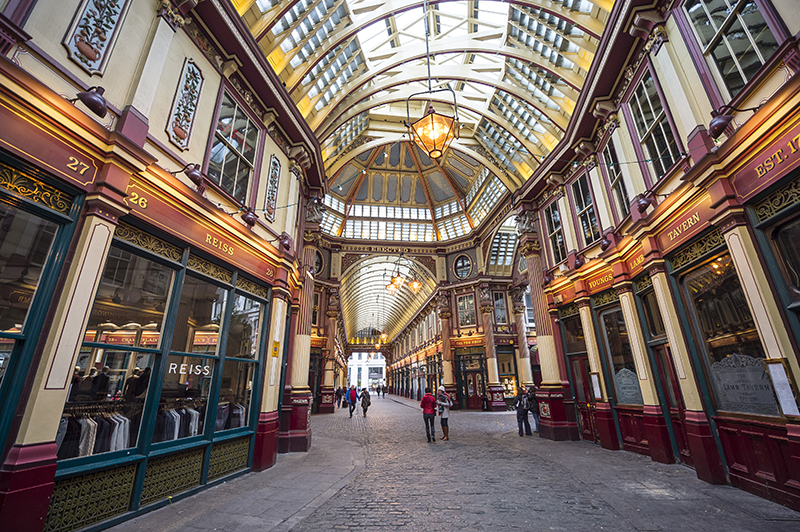
Leadenhall Market
While you won’t find the bawdy street traders or tarpaulin-covered stalls of a traditional British market here, a late morning stroll through Leadenhall Market and the surrounding streets is a delight. Situated in the heart of the ‘Square Mile’, a nickname given to the 1.12 square miles that constitute the City of London, this is a shopping destination packed with artisan coffee shops and top-end eateries. (Although curiously for a central London “market”, it is closed on weekends).
The area first welcomed market traders in the 14th century, before the former Lord Mayor Richard ‘Dick’ Whittington gifted the site to the City of London in 1411. The market survived the Great Fire of London largely unscathed, but was rebuilt in the 1880s by architect Sir Horace Jones, who designed the vaulting iron-and-glass ceiling that has since been Grade II listed. Leadenhall’s status as a Great British icon was cemented when it doubled as Diagon Alley in scenes filmed for Harry Potter and the Philosopher’s Stone.
www.cityoflondon.gov.uk/leadenhall
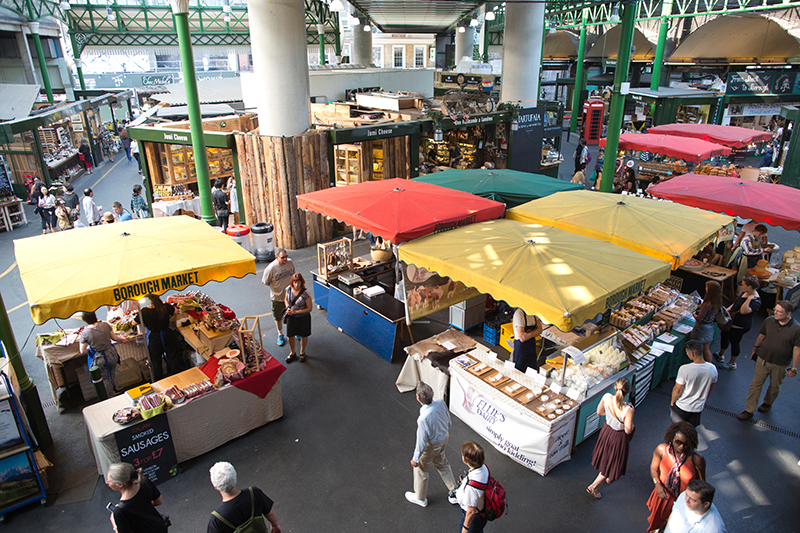
Borough Market
This south-of-the-river favourite held its millennium celebrations in 2014, albeit under tenuous circumstances: in his 13th-century history of Norse kings, Heimskringla, the great Icelandic historian Snorri Sturluson notes that Southwark was a “great market town” in 1014.
By the 17th century, the area had developed into a raucous destination, with livestock wandering the streets, rogue traders hawking their wares and drunkards from the nearby inns causing merry hell. After years as a wholesale destination, the artisan food-and-drink market that we know and love today only emerged in 1998, when a successful three-day Food Lovers’ Fair developed into a monthly – and then weekly – affair.
A full market runs Wednesday to Saturday with elbow room coming at a premium on the latter, as tourists, local shoppers and amateur photographers all jostle for a glimpse of stalls piled high with fresh produce. While the clientele is international, so is the food on offer – from Argentine confectionery to Ethiopian street food, your taste buds
can travel thousands of miles under the market canopy.

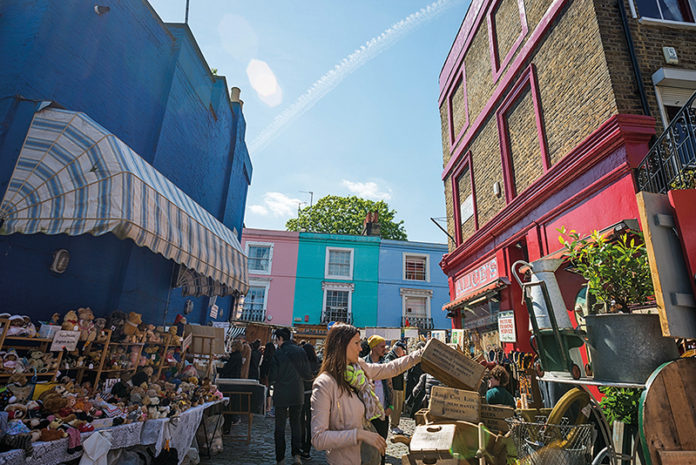




 © 2024
© 2024